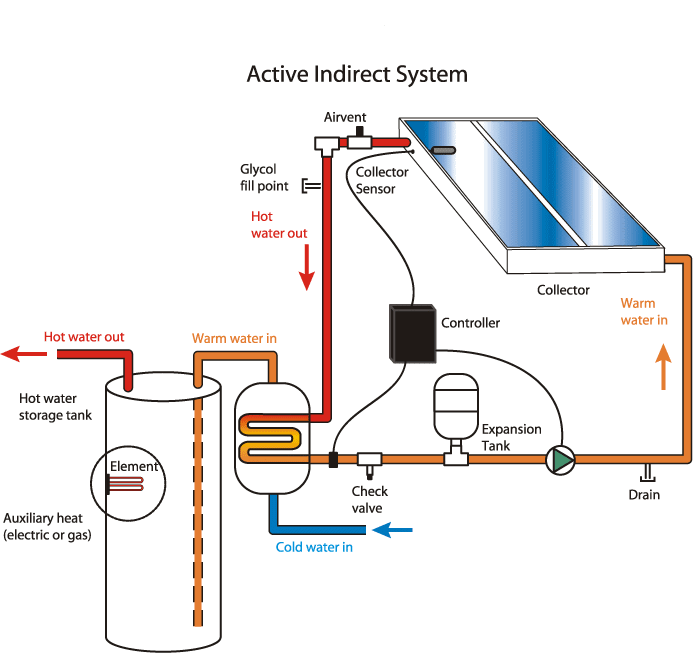Solar thermal - How it Works
Solar thermal water heaters vary in their details, but they all do the same basic things - gather heat in a solar collector, transfer the heat directly or indirectly to the water supply, and store the heated water until it's used. These systems use relatively simple, time-tested technology, which is one reason they are a best bet in renewable energy.
Closed loop antifreeze systems are the most popular and versatile type of solar thermal system installed worldwide. The following are the basic system components:
- one or more collectors
- insulated piping
- a circulating pump
- an expansion tank
- a hot-water storage tank
- a heat exchanger
- solar fluid (usually a solution of water
- and non-toxic propylene glycol anti-freeze)
- a controller
- valves and gauges

Whenever the sun shines on the collectors the circulating pump comes on and the solar fluid circulates within the closed loop. The fluid gets hot inside the collectors and travels through the piping to the heat exchanger.
The heat exchanger transfers the heat from the fluid to the water inside the storage tank, which stores the heated water for your use. As the fluid heats, it expands, so the expansion tank is included to relieve pressure in the system.
When the sun is not shining, the circulating pump simply turns off, and the fluid stops circulating.

